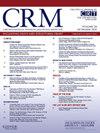根据世界心脏联盟超声心动图标准诊断的风湿性心脏病在非洲的患病率:系统回顾和荟萃分析。
IF 1.9
Q3 CARDIAC & CARDIOVASCULAR SYSTEMS
引用次数: 0
摘要
风湿性心脏病(RHD)是急性风湿热(ARF)引起的一种慢性并发症,是由A组链球菌感染引发的一种自身免疫反应。它主要影响发展中国家的儿童和年轻成年人。风湿性心脏病在全球范围内仍有很大的异质性。由于社会经济因素,随着青霉素的引入,RHD在工业化国家几乎绝迹。相比之下,在非洲、亚洲、南美洲和澳大拉西亚的发展中社区,RHD仍然流行。我们采用世界心脏联盟(WHF)的超声心动图诊断标准,对目前非洲潜伏性 RHD 的发病率进行了估计。对 21 项报告 RHD 患病率的研究进行了系统回顾和荟萃分析,这些研究涉及 40639 名患者。RHD的估计患病率为每千人25.5例(P≤0.02;95 % CI,每千人18.1-32.9例):明确RHD为每千人13.1例(95 % CI,每千人7.7-18.5例):边缘RHD为每千人12.4例(95 % CI,每千人7.7-17.0例)。与儿童(M = 10.3,SD = 9.2)相比,成人(M = 28.2,SD = 6.1)的确诊 RHD 患病率明显更高,t(17) = 2.6,p = .0179。学校中确诊的 RHD 患病率为 7.92 例/1000 人(95 % CI,4.49-11.35 例/1000 人),社区中确诊的 RHD 患病率为 26.17 例/1000 人(95 % CI,12.27-40.06 例/1000 人)。这项荟萃分析仅使用了根据2012年WHF进行的研究,可能对非洲的RHD患病率做出了更好的估计,并清楚地显示了RHD在社区和成人中的高患病率。本文章由计算机程序翻译,如有差异,请以英文原文为准。
Prevalence of rheumatic heart disease diagnosed according to the echocardiographic criteria of the World Heart Federation in Africa: A systematic review and meta-analysis
Rheumatic heart disease (RHD) is a chronic complication arising from acute rheumatic fever (ARF), an autoimmune response triggered by group A streptococcal infection. It primarily affects children and young adults in developing countries. RHD continues to show substantial global heterogeneity. Socioeconomic factors lead the virtual disappearance of RHD in industrialized countries with the introduction of penicillin. By contrast, RHD is still endemic in Africa, Asia, South America, and developing communities of Australasia. We provide an estimate of the current prevalence of latent RHD in Africa using the echocardiographic diagnostic criteria of the World Heart Federation (WHF). Systematic review and meta-analysis of 21 studies reporting the prevalence of RHD, encompassing 40.639 patients. Estimated prevalence of RHD was 25.5 cases per 1000 population (P ≤0.02; 95 % CI, 18.1–32.9 per 1000): definite RHD 13.1 cases per 1000 population (95 % CI, 7.7–18.5 per 1000): and borderline 12,4 cases per 1000 population (95 % CI, 7.7–17.0 per 1000). The prevalence of definite RHD was a significantly higher in adults (M = 28.2, SD = 6.1) compared to children (M = 10.3, SD = 9.2), t(17) = 2.6, p = .0179. Prevalence of definite RHD in schools was 7,92 cases per 1000 population (95 % CI, 4,49–11,35 per 1000) and in community was 26,17 cases per 1000 population (95 % CI, 12,27–40,06 per 1000). This meta-analysis may have produced a better estimate of the prevalence of RHD in Africa using only studies performed according to the 2012 WHF, and clearly showed the high prevalence of RHD in the community and in adults.
求助全文
通过发布文献求助,成功后即可免费获取论文全文。
去求助
来源期刊

Cardiovascular Revascularization Medicine
CARDIAC & CARDIOVASCULAR SYSTEMS-
CiteScore
3.30
自引率
5.90%
发文量
687
审稿时长
36 days
期刊介绍:
Cardiovascular Revascularization Medicine (CRM) is an international and multidisciplinary journal that publishes original laboratory and clinical investigations related to revascularization therapies in cardiovascular medicine. Cardiovascular Revascularization Medicine publishes articles related to preclinical work and molecular interventions, including angiogenesis, cell therapy, pharmacological interventions, restenosis management, and prevention, including experiments conducted in human subjects, in laboratory animals, and in vitro. Specific areas of interest include percutaneous angioplasty in coronary and peripheral arteries, intervention in structural heart disease, cardiovascular surgery, etc.
 求助内容:
求助内容: 应助结果提醒方式:
应助结果提醒方式:


